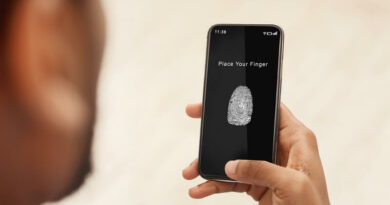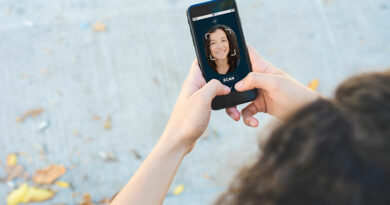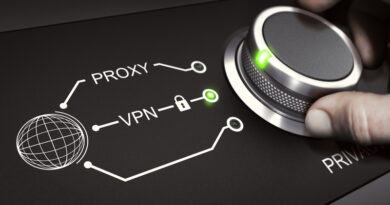How Biometric Data Can Be Used to Improve Learning in School?
To put it simply, biometrics represent the specific biological measurements of each individual. Biometric data includes information such as height, fingerprints, iris, and other visible aspects. Thanks to advanced technology, schools can now use biometric data to monitor how their subtends engage with the institution. Apart from security enhancement, biometric data can be used to enhance education as well, thus improving the way each student responds to the curriculum.
Monitor attendance
One of the biggest issues that schools have is monitoring the attendance of their students. By using biometric data, such as fingerprints or retina scan, attendance can be monitored in a much more accurate way. This way, teachers can not only know when a student is missing but also monitor what classes they missed and for how long, to have a better understanding on how to adjust their curriculum for those particular students.
If teachers know exactly what classes a student missed, they can later provide them with the necessary material in order to help them catch up with the rest of the students. This can be done by implementing an online platform, where teachers can share school materials and communicate with their students and even provide online tutoring lessons for them if needed.
By tailoring their curriculum to fit each and every students’ needs, classes can become more efficient and students can learn better, faster and more efficient.
Time management
Teachers already have to waste a tremendous amount of time for activities that are unrelated to teaching. If student attendance is monitored through biometrics, teachers no longer have to verify it at the beginning of the class, which saves time for academic activities. To monitor attendance, teachers lose anywhere from 3 to 10 minutes in each class. During an entire school year, this means over 15 hours of in-class activity lost.
Biometrics can help with student registration as well, by incorporating cloud computing with biometrics. This way, students’ information can be stored and shared between institutions, when students are being transferred or when they need to change institutions. For example, the information can be transferred from one student’s high school to the university they choose to attend, to make the process much easier. This way, the university already has information about that student’s learning behavior, which can then be used to for study groups based on the way students learn. This helps teachers adjust their teaching method to fit each group of students.
Improve security
This is perhaps one of the most obvious reasons to apply biometrics in schools. By introducing fingerprint or retina scanners, educational institutions can monitor exactly who entered and left the building, as well as the exact time it happened. This will give everyone, from parents to students and school management some peace of mind, knowing no stranger can enter the building and cause issues.
These scanners can be of great help not only at the entrance doors but also in common spaces, such as the library or cafeteria, where students spend a great amount of time. “This way, if a stranger attempts to enter the building, these scanners can prevent them from doing so and surveillance cameras can be used to identify the person. At the same time, security can be alerted when this happens and act fast, to stop and question the individual.“ says George Wills, Data Security Analyst at Trust My Paper.
At the same time, students can have access to certain areas, based on their curriculum. This can prevent unauthorized people from entering labs or other restricted areas inside the institution. Access can be provided or taken away when needed with just a few clicks and all areas can be monitored to ensure security.
Understanding student engagement
Surveillance cameras and infrared scanners can be used to identify and analyze student engagement and behavioral issues, as well as body language and student interactions. This way, teachers can see when and why students lose interest in what they are being taught. By integrating big data with biometrics, students’ behavioral changes can show educators how the class reacts with certain materials, how their body language changes when they need help, as well as what distracts them from the course.
By analyzing student behavior, teachers can personalize their curriculum for each group of students, based on what sparks their attention and engagement during class.
Biometrics can be used to track the engagement of students with certain extracurricular activities as well, which can then be analyzed and turned into reports when needed. The students can then use these reports to document their activity and prove their attendance. This can be of great help when students are asked about those activities during university admission or work interviews.
Ensure integrity
In order to correctly grade students, educational institutions need to ensure that tests and assignment results are as accurate as possible. Cameras and infrared scanners can identify cheating attempts, making tests a fair game for hard-working students. By analyzing body temperature, behavior, and movement, teachers can be alerted when a cheating attempt is happening and help prevent it.
It is no news that students have attempted to use various methods to cheat exams, one of the most popular one being to send someone else to take the test for them. If students have to use fingerprints or retina scan to enter the exam room, such issues can be prevented.
At the same time, such technology can not only ensure integrity amongst students but also amongst teachers. These cameras can be used to monitor educators’ activity and the way they are engaging with their students, to prevent unfair or preferential treatment from being applied. When a teacher is not treating a student fair, it can be hard to prove, as is it usually one’s word against another’s. Such issues can be dealt with in a much more effective way if classes and teachers’ offices have surveillance systems installed.
Technology has helped shape education in many ways and forms, and biometrics can be an extremely reliable way to improve security, student engagement, as well as ensure integrity in class. However, as every new piece of technology before, it has yet to prove how effective it can be and what tremendous benefits it can bring to both students and educators.












